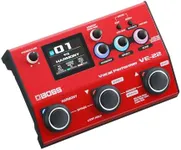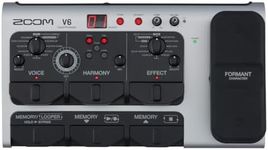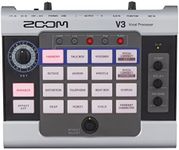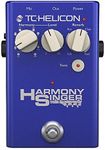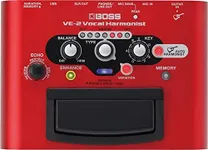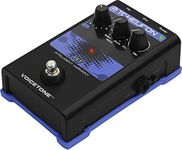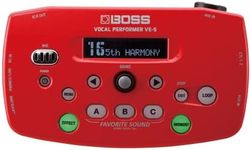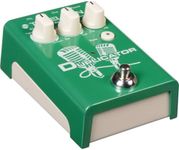Buying Guide for the Best Vocal Harmony Processors
Choosing the right vocal harmony processor can significantly enhance your musical performances by adding depth and richness to your vocals. These devices are designed to create harmonies that complement your voice, making your solo performances sound like a full choir. To find the best fit for you, it's important to understand the key specifications and how they align with your needs and preferences.Number of Harmony VoicesThis spec refers to the number of additional voices the processor can generate to harmonize with your lead vocal. It's important because more voices can create a fuller, richer sound. Typically, processors offer anywhere from 2 to 8 harmony voices. If you're a solo performer looking for a simple, natural harmony, 2-3 voices might be sufficient. For more complex arrangements or a choir-like effect, you might want a processor that can handle 4 or more voices.
Harmony ModesHarmony modes determine how the processor generates harmonies. Common modes include scale-based, chord-based, and manual. Scale-based modes use a predefined musical scale to create harmonies, which is great for consistent, predictable results. Chord-based modes generate harmonies based on the chords you play on an instrument, offering more dynamic and musically complex harmonies. Manual modes allow you to set specific intervals for each harmony voice, providing maximum control. Choose a mode that matches your musical style and technical comfort level.
Vocal EffectsMany vocal harmony processors come with additional vocal effects such as reverb, delay, and pitch correction. These effects can enhance your overall sound and add professional polish to your performance. Reverb adds space and depth, delay creates echo effects, and pitch correction ensures your vocals stay in tune. If you want an all-in-one solution, look for a processor with a variety of built-in effects. If you already have separate effects units, you might prioritize other features.
Input and Output OptionsThe input and output options determine how you connect the processor to your microphone, instruments, and sound system. Common inputs include XLR and 1/4-inch jacks, while outputs might include XLR, 1/4-inch, and USB. It's important to ensure compatibility with your existing equipment. If you perform live, look for a processor with robust and versatile connectivity options. For studio use, USB connectivity can be useful for direct recording to a computer.
Ease of UseEase of use refers to how intuitive and user-friendly the processor is. This is important because a complex device can be difficult to operate, especially during live performances. Look for a processor with a clear, easy-to-navigate interface, and consider whether it has features like preset storage and footswitch control. If you're new to vocal harmony processors, a simpler model with straightforward controls might be the best choice. More experienced users might appreciate advanced features and customization options.
Build Quality and PortabilityBuild quality and portability are important considerations, especially if you plan to use the processor for live performances. A well-built processor will be more durable and reliable. Portability is key if you need to transport the device frequently. Look for a processor with a sturdy construction and a compact, lightweight design. If you perform regularly, a rugged, road-ready unit will be more suitable. For home or studio use, build quality might be less critical, but it's still worth considering.
